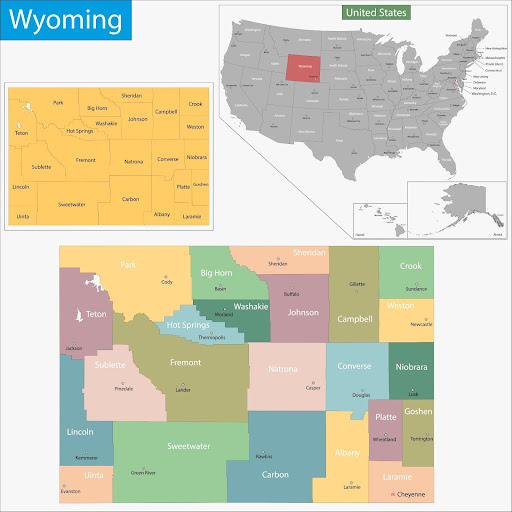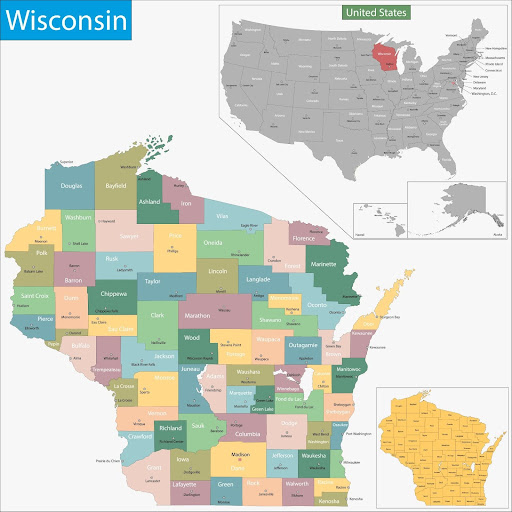Table of Contents
With over 16 million acres of forestland, steep terrain, frequent wildland-urban interface (WUI) overlap, and a long history of human-caused ignitions, Pennsylvania presents a distinct challenge for wildland fire investigators.
Fire investigators in this region need sharp cause-determination skills, strong interagency communication, and a deep understanding of how land ownership shapes jurisdiction.
This guide on wildland fire resources in Pennsylvania breaks down fire response infrastructure, helping you navigate agencies, timelines, training hubs, and live intelligence tools with clarity and confidence.
Explore our wildland firefighting resources guide for deeper info.
Live Incident Updates & Maps
Track live fire activity, smoke conditions, and burn bans with this live tool:
State Overview
Pennsylvania is the most heavily forested state in the northeastern U.S., and that forest cover is both an asset and a liability. In spring and fall, when leaves are down, humidity drops, and wind picks up, the state becomes a tinderbox.
- Ridge and Valley Region (Central PA): Frequent fire activity, often in remote or mountainous terrain. Leaf litter and understory growth create long-burning fuels.
- Laurel Highlands & Allegheny Plateau: Forested zones with slower response times due to steep access and minimal road infrastructure.
- Piedmont & South-Central Counties: Proximity to highways, recreational land, and residential zones makes these areas prone to human-caused ignition.
- WUI Zones: Expanding suburban fringes, especially around Harrisburg, Scranton, and Pittsburgh, increase complexity for initial response and cause determination.
Wildfire Season Timeline
Unlike the West, Pennsylvania’s fire season isn’t summer; it’s spring and fall. Investigators here deal with different increases in humidity, but the stakes are just as high.
- Spring (March–May): Peak season. Dormant vegetation, low humidity, and gusty winds fuel fast-moving fires. Agricultural burns and debris disposal are common ignition sources.
- Summer (June–August): Fire activity drops due to green-up and increased moisture, though lightning-caused ignitions still occur in isolated forests.
- Fall (October–November): A secondary fire season. Dried leaves and crisp weather create volatile surface fuels. Hunting season increases human presence in backwoods areas, and illegal burns are common.
Key State Agencies Involved
- Pennsylvania Department of Conservation and Natural Resources (DCNR): DCNR’s Bureau of Forestry is the state’s lead wildfire agency. It handles suppression, prevention, and fire investigation on public and many private lands. District forest fire wardens and forest managers lead local investigations and suppression teams.
- Pennsylvania Emergency Management Agency (PEMA): PEMA activates during large-scale wildland fires, especially when multiple counties are affected or when mutual aid is required. They manage communications, logistics, and statewide coordination.
- U.S. Forest Service (USFS – Allegheny National Forest): Federal fire investigations follow NWCG and LEI protocols. Any fire on federal lands, especially in the Allegheny National Forest, requires coordination with the USFS Law Enforcement team.
- Local Government & Fire Departments: While DCNR leads fire efforts on state lands, many initial attacks occur in municipalities. Local fire departments (especially in eastern PA) often respond first and may handle cause determination in non-state protection areas.
Local Wildland Firefighting Resources
Pennsylvania’s fire response ecosystem is a hybrid; state forestry rangers, trained volunteer fire wardens, and VFDs all share suppression responsibilities. Investigators should expect a mix of NWCG-certified personnel and local crews with terrain expertise.
List of Local/State/Federal Fire Response Agencies
Contact Numbers and Emergency Links
- To Report a Wildfire: Dial 911
- DCNR Wildfire Dispatch: (717) 787-2925
- DCNR Fire Info & Burn Bans: https://www.dcnr.pa.gov
- USFS Allegheny Ranger District Dispatch: (814) 363-6000
- Air Quality/Smoke Alerts: https://fire.airnow.gov
Training & Volunteering
Wildland fire training in Pennsylvania is tightly managed by DCNR, with regional academies and certification programs available for both professionals and volunteers.
NWCG-Approved Academies and Centers
Volunteer and Seasonal Training Opportunities
- DCNR Forest Fire Warden Program: Wardens are trained volunteers who assist in suppression and investigation. They serve as key contacts for VFDs and often participate in initial assessments.
Seasonal Firefighter Recruitment: Each spring, DCNR hires and trains seasonal wildland firefighters. Red card certification and fireline experience are part of the role.
Stay Informed on Pennsylvania’s Wildland Fire Landscape
Pennsylvania burns, and when it does, it moves fast. With over 98% of fires here caused by human activity, cause determination plays a front-line role in prevention.
Stay up to date with seasonal conditions, burn bans, and suppression protocol shifts. Know which district you’re in, who the local warden is, and how dispatch chains work in mixed-agency incidents. Build relationships with local fire crews, because in this state, the guy who helped with chainsaw mop-up may also be your best source for how it started.
FAQs
How do I report a wildfire in Pennsylvania?
Dial 911 immediately. You can also report suspicious fire activity to DCNR’s regional dispatch lines.
Who investigates wildfires in Pennsylvania?
Typically, DCNR for state lands, USFS for federal lands, and local fire departments for municipal areas. Cause investigations often involve multiple agencies.
Can I burn brush or conduct a controlled fire on my property?
Yes, but you must comply with local ordinances and may need a permit. During active burn bans, all open burning is prohibited, regardless of intent.
Where can I get wildland fire training in PA?
Start with the PA Wildland Fire Academy in Mont Alto, or contact your DCNR district forester for regional training sessions.










